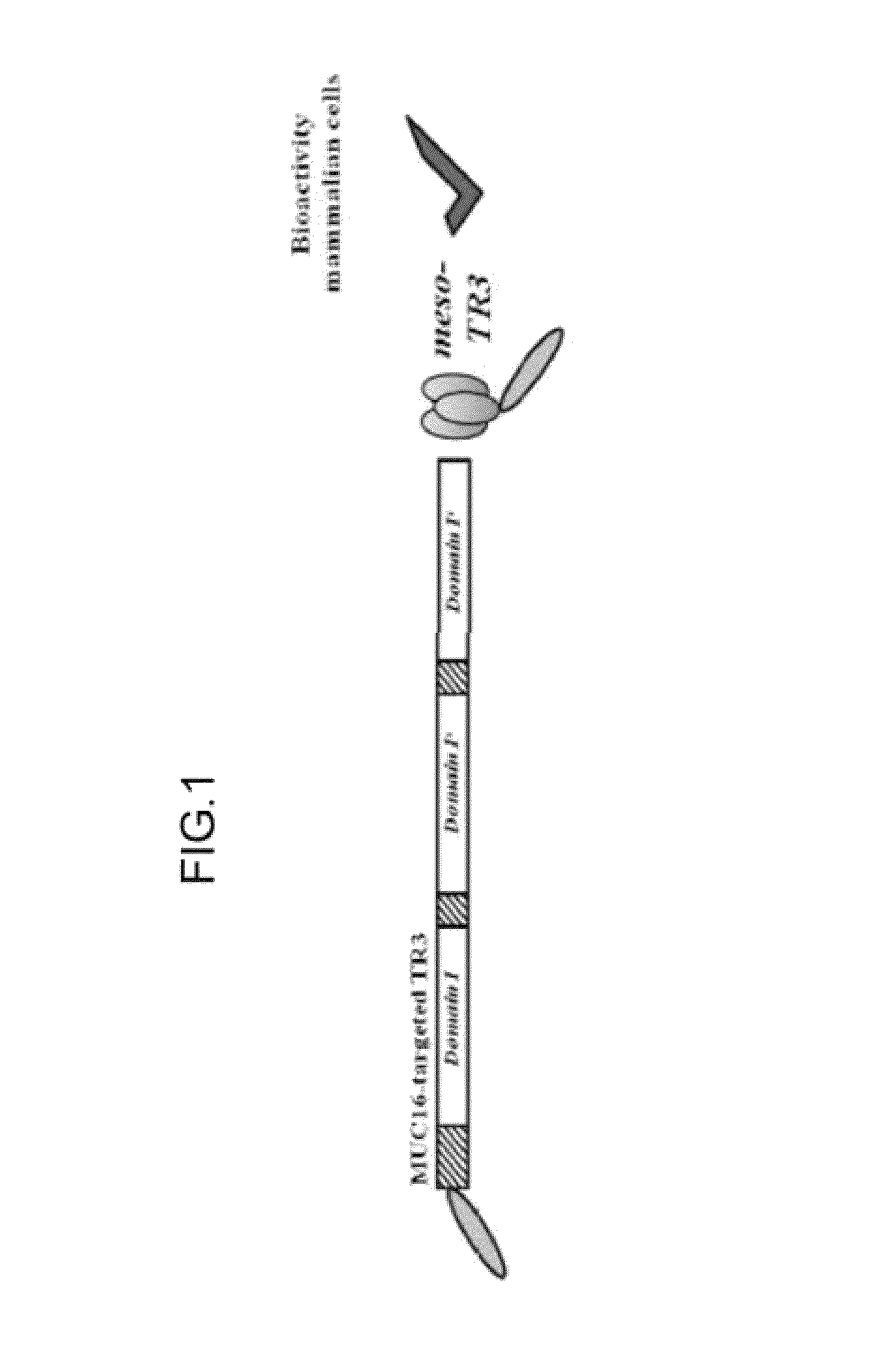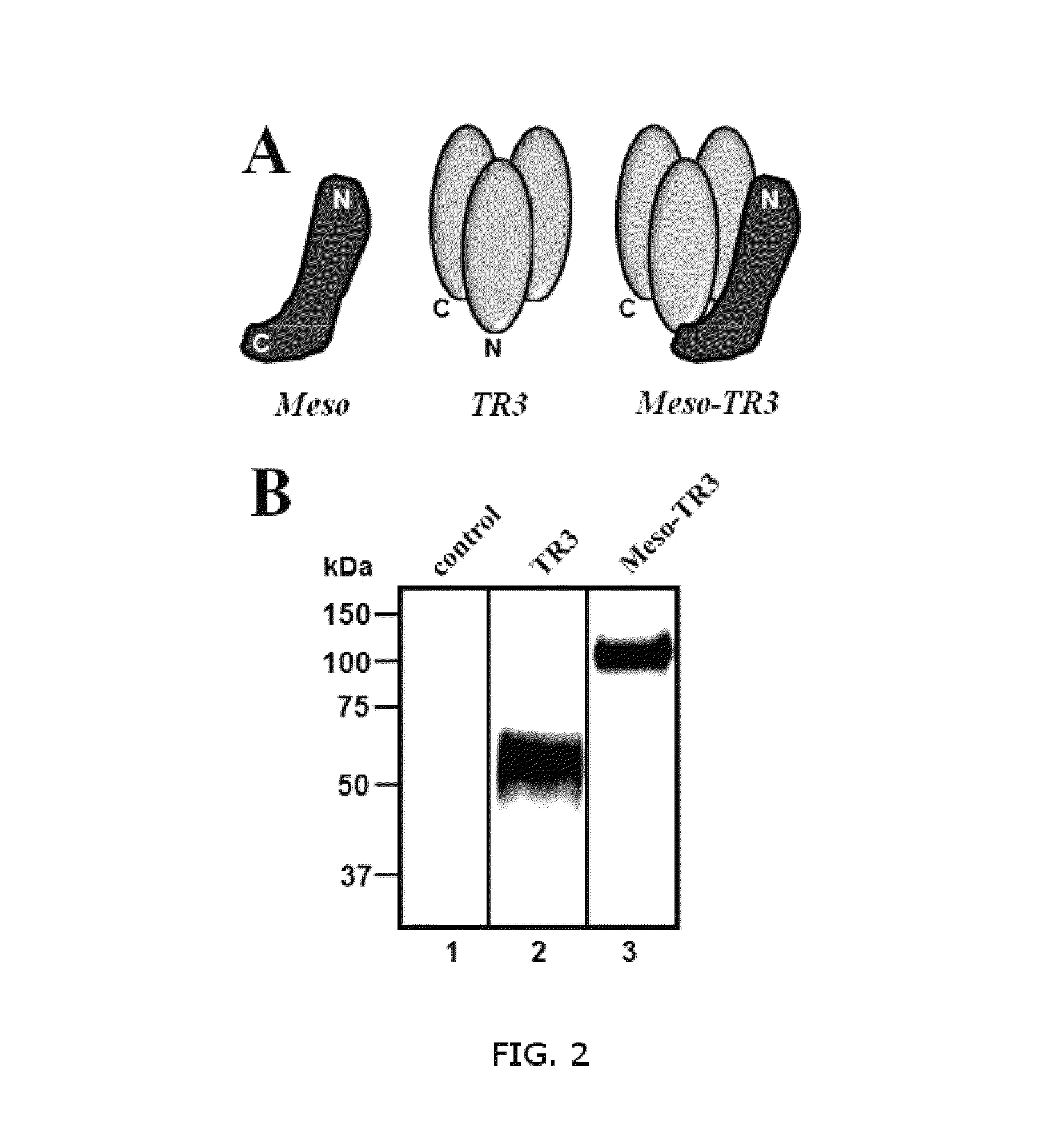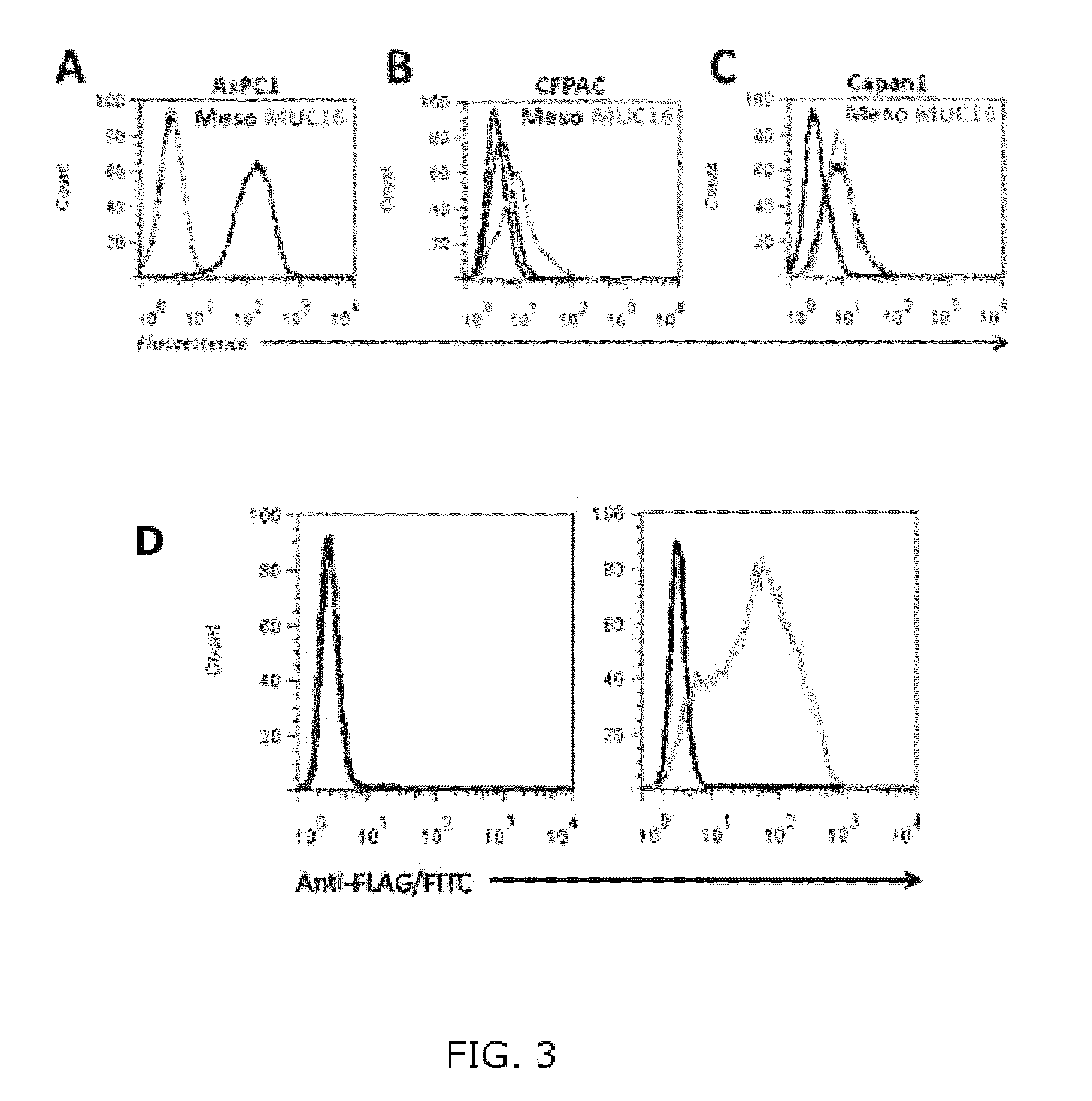Tumor targeted TNF-related apoptosis inducing ligand fusion polypeptide and nucleic acids encoding the same
a ligand and tumor cell technology, applied in the direction of fusion polypeptide, peptide/protein ingredients, dna/rna fragmentation, etc., can solve the problems of unmet need for therapeutically active compositions that can induce cell death in tumor cell targets, and failed attempts to produce bioactive trails from monomeric cdnas in mammalian cells. to achieve the effect of reducing the metastatic potential of tumor cells
- Summary
- Abstract
- Description
- Claims
- Application Information
AI Technical Summary
Benefits of technology
Problems solved by technology
Method used
Image
Examples
example 1
[0056]This example illustrates design and biochemical characterization of the MUC16-targeted TRAIL trimer TR3 (FIG. 2). FIG. 2A is a schematic representation of proteins developed by the inventors. In these experiments, soluble mesothelin (Meso) containing an N-terminal FLAG tag (not shown), the parental TRAIL drug platform TR3 (center) and the MUC16-targeted mesothelin-TR3 fusion protein (Meso-TR3) were produced by transient transfection of HEK293T cells. FIG. 2B, depicts a Western blot analysis (reducing conditions) documents the molecular weights of TR3 (≈61 kDa, lane 2) and Meso-TR3 (≈100 kDa, lane 3) using anti-TRAIL pAb. Supernatant from mock-transfected HEK293T cells served as a negative control (lane 1).
[0057]Soluble mesothelin has been shown to bind to MUC16 rapidly and with high affinity (Gubbels, J. A., et al., Mol. Cancer 5:50, 2006). Since endogenous mesothelin is attached to the cell surface via a GPI anchor (Hassan, R., et al., Clin. Cancer Res. 10:3937, 2004; Chang, ...
example 2
[0058]This example illustrates that mesothelin binds to MUC16 in MUC16-expressing cells. In these experiments, various cancer cell lines were screened for expression of mesothelin and MUC16. Briefly, cancer cell lines were incubated with antibodies against human mesothelin (K1, Santa Cruz) and human MUC16 (X75, AbCam). Primary antibody was detected with fluorescently labeled secondary antibody. The cells were then analyzed by flow cytometry. Mesothelin was expressed in all pancreatic cancer cell lines screened (AsPC1, CFPAC, Capan1) as well as ovarian cell line OVCAR3 (FIG. 3A-C, FIG. 4 A-C). MUC16 was only absent in AsPC3 (FIG. 3A). The presence of surface bound MUC16 is a prerequisite for the targeted delivery of TR3 to the cancer cells.
[0059]In order to confirm the MUC16 expression profile on OVCAR3 cells, we performed flow cytometry and were able to detect a strong surface expression with a homogenous staining pattern for 100% of the cells (FIG. 4A). Next, we tested the ability ...
example 3
[0064]This example illustrates functional consequences of attaching the MUC16 targeting domain (mesothelin) to TR3.
[0065]TR3 and the fusion polypeptide mesothelin-TR3 (FIG. 1) were produced in HEK293T cells using standard transfection procedures. When MUC16-deficient Jurkat cells were treated with equimolar concentrations of TR3 and mesothelin-TR3, the cells were killed to the same degree (FIG. 5A).
[0066]In contrast, as shown in FIG. 5, when MUC16-high expressing OVCAR3 cells were treated with equimolar concentrations of TR3 and mesothelin-TR3, the mesothelin-TR3 was substantially more powerful in killing the cells than TR3 alone (5B).
[0067]OVCAR3 cells treated with mesothelin-TR3 can be rescued from cell death by adding increasing amounts of soluble mesothelin (5C). To determine whether cell death is caused by apoptosis, OVCAR3 cells were treated with mesothelin-TR3 in the presence of Z-VAD, a cell-permanent pan caspase inhibitor that inhibits the induction of apoptosis. In the pre...
PUM
| Property | Measurement | Unit |
|---|---|---|
| molecular weights | aaaaa | aaaaa |
| molecular weights | aaaaa | aaaaa |
| molecular weight | aaaaa | aaaaa |
Abstract
Description
Claims
Application Information
 Login to view more
Login to view more - R&D Engineer
- R&D Manager
- IP Professional
- Industry Leading Data Capabilities
- Powerful AI technology
- Patent DNA Extraction
Browse by: Latest US Patents, China's latest patents, Technical Efficacy Thesaurus, Application Domain, Technology Topic.
© 2024 PatSnap. All rights reserved.Legal|Privacy policy|Modern Slavery Act Transparency Statement|Sitemap



